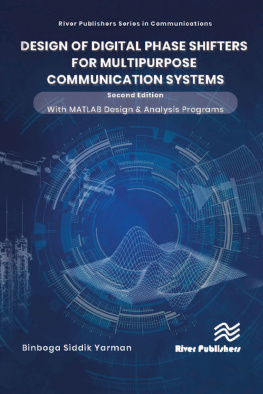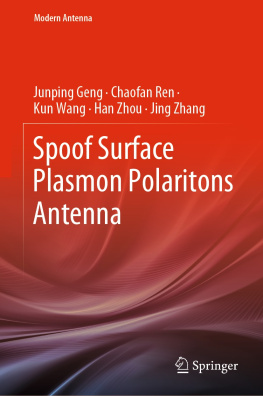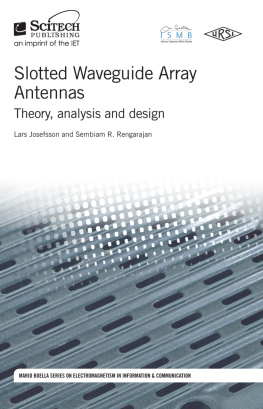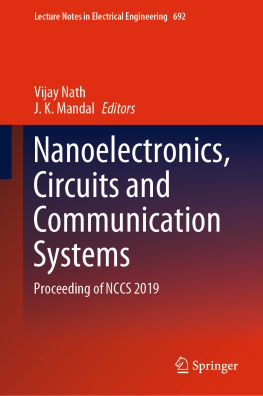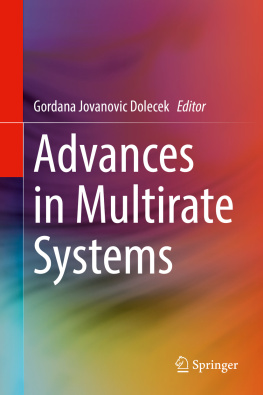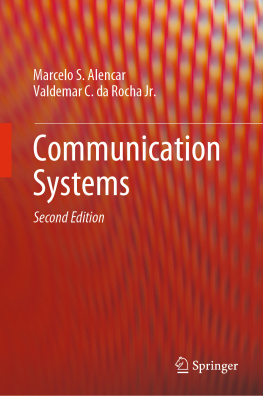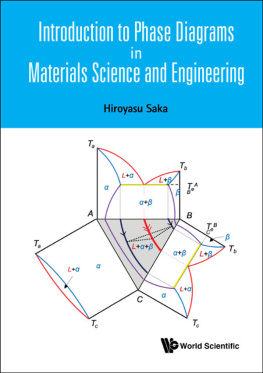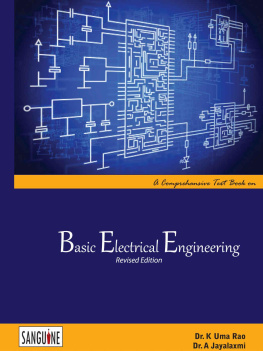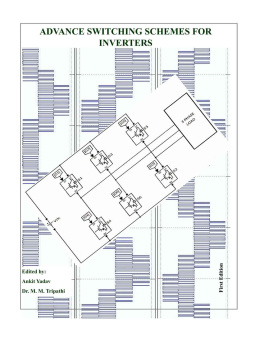Bookmarks
Pagelist
Guide

halftitle
Design of Digital Phase Shifters for Multipurpose Communication Systems With MATLAB Design and Analysis Programs
RIVER PUBLISHERS SERIES IN COMMUNICATIONS
Series Editors:
ABBAS JAMALIPOURThe University of Sydney, Australia
MARINA RUGGIERIUniversity of Rome Tor Vergata, Italy
JUNSHAN ZHANGArizona State University, USA
The River Publishers Series in Communications is a series of comprehensive academic and professional books which focus on communication and network systems. Topics range from the theory and use of systems involving all terminals, computers, and information processors to wired and wireless networks and network layouts, protocols, architectures, and implementations. Also covered are developments stemming from new market demands in systems, products, and technologies such as personal communications services, multimedia systems, enterprise networks, and optical communications.
The series includes research monographs, edited volumes, handbooks and textbooks, providing professionals, researchers, educators, and advanced students in the field with an invaluable insight into the latest research and developments.
For a list of other books in this series, visit www.riverpublishers.com
Design of Digital Phase Shifters for Multipurpose Communication Systems
With MATLAB Design and Analysis Programs
BinbogaSiddikYARMAN RFT Research Corp., Istanbul, Turkey Istanbul University-Cerrahpasa, Technical University of Istanbul University of Lincoln, Lincolnshire UK


Published 2022 by River PublishersRiver PublishersAlsbjergvej 10, 9260 Gistrup, Denmark www.riverpublishers.com
Distributed exclusively by Routledge 4 Park Square, Milton Park, Abingdon, Oxon OX14 4RN 605 Third Avenue, New York, NY 10017, USA
Design of Digital Phase Shifters for Multipurpose Communication Systems With MATLAB Design and Analysis Programs / by Binboga Siddik YARMAN.
2022 River Publishers.All rights reserved. No part of this publication may be reproduced, stored in a retrieval systems, or transmitted in any form or by any means, mechanical, photocopying, recording or otherwise, without prior written permission of the publishers.
Routledge is an imprint of the Taylor & Francis Group, an informa business
DOI: 10.1201/9781003337867
ISBN 978-87-7022-381-2 (print)
While every effort is made to provide dependable information, the publisher, authors, and editors cannot be held responsible for any errors or omissions.
Contents
Levent Sevgi
By Celal Avci and B. S. Yarman
Celal Avci
Preface
This book aims to cover a new emerging need in designing digital phase shifter for modern communication systems.
With the advancement of new generation mobile communication systems, directed beams of antenna arrays save substantial amount of power as well as improve the communication quality.
In this regard, beam-forming circuits, such as digital phase shifters, constitute essential parts of the antenna array systems.
Therefore, this book is devoted to the design of digital phase shifters for various communication systems.
In the past, phase shifters design requirements used to demand narrow bandwidth without physical size constraints.
Nowadays, phase shifters must be compact and suitable for very large-scale integrated Circuits (VLSI) or microwave monolithic integrated Circuit (MMIC) implementation with wide frequency band.
Since the early 1980s, we have been designing digital phase shifters for various applications. We started with loaded line phase shifters and then employed loaded branch line couplers to achieve wider frequency bands. In order to reduce the physical size, we used to employ three elements LC ladder networks in T or PI configurations.
To achieve the broad frequency band with substantial amount of phase shift, usage of LC lattice structures is inevitable.
Lately, we designed phase shifters using both low-pass and high-pass LC lattice structures suitable for monolithic implementation. In the course of design, we utilized PIN diodes and FETs as switching elements.
In the second edition of the book, first, we cover the major concepts of phase shifters as building blocks of antenna array systems ( will clearly understand to design antenna arrays using Prof. Sevgis MatLab programs. Several examples and MatLab programs are included with the book. Thank you Levent Sevgi for your contributions.
Then, as in the previous edition of the book, we introduce scattering parameters for two-port networks to analyze phase shifter circuits ().
In , we introduce the theory of transmission lines.
In , loaded line phase shifters are presented.
is devoted to analyzing three-element LC low-pass and high-pass sections as phase shifting units.
In , a novel 180 low-pass-based T-section digital phase shifters topology (LPT-DPS) is introduced.
In , a novel 180 low-pass-based PI-section digital phase shifter topology (LP-DPS) is presented.
In , a novel high-pass-based T-section digital phase shifter topology is outlined.
All the phase shifter configurations introduced up to Chapter 8 yields narrow frequency bandwidth. They, perhaps, result in 10%20% bandwidth around the center frequency of the passband.
In , we introduce a broadband and broad phase range digital phase shifter topology based on symmetrical lattice structures. In this chapter, we also discussed MMIC implementation of wideband digital phase shifter topology. With the help of my old Ph.D. student Dr. Celal Avci of Analog Device, complete layouts for 45, 90, and 180 phase shifters are prepared as they arc designed using TSMC 180 nm library on Cadence. These structures arc also suitable for new generation communication systems.
In , we present a T-section-based digital phase shifter topology, which provides phase shift range over 0 360 phase. This topology is simpler than that of the lattice-based phase shifter. It utilizes only three-solid-state switches. In return, it offers smaller bandwidth.
In , we introduce a PI-section digital phase shifter topology, which covers the phase range of 0 360. In a similar manner to that of Chapter 11, a 360 PI-section-based digital phase shifter topology is simpler than that of a lattice-based digital phase shifter topology. However, it offers a narrow frequency band.
In , we outline a 180-High-pass-Based Digital Phase Shifter Topology. This topology can directly be derived from the topology presented in Chapter 11 by performing a 2-pair-wire type of operation in one digital phase state and a high-pass LC ladder operation in the other switching state.
In the last chapter (), Dr. Celal Avci proposes a very basic and simple low-pass/high-pass-based T-section digital phase shifter topology using six CMOS FET switches. The new structure provides wide-phase range and broadband operation. It is relatively easier to implement than that of the lattice phase shifter topology presented in Chapter 10 with the expense of increased insertion loss and reduced bandwidth.

